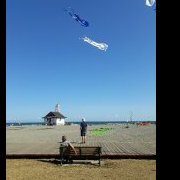Looking for some basic advice about putting in an irrigation system on some farm land.
-
Recently Browsing 0 members
- No registered users viewing this page.
-
Topics
-
-
Popular Contributors
-
-
Latest posts...
-
16
Politics Thaksin's Secret Mission: Inside the Hunt for Rebel MPs
That's a good one 😂 -
6
Visa options for 4-5 month snowbird stay for winter 2025-2026
I think Vancouver is more responsive than Ottawa, tbh. Ottawa seems overworked and have missed their own deadlines more than once with me. It's one reason why I'd prefer the VE stamp. But how did you get Bumrungrad to write you a letter? Are you an out patient there? -
122
Crime Foreigner Buries Dog Alive in Shocking Phuket Incident
Or a Yank, or German, or an Aussie, or a Dutchman, Swedish maybe, Danish, or another white nationaity, should I go on you ignorant prat?🤬 -
-
20
Transport Pattaya's Economy Set for Lift-Off with New Flight Routes
Udon probably has the best catchment area but in my case it's a 4 hour drive and in the wrong direction, so driving is the only viable option to get to Pattaya from Yasothon. -
7
Report British Tourist Attacked in Chiang Mai Over Karaoke Bill Dispute
The video is described as "depicted the attackers forcibly restraining the man, identified as 27-year-old Cameron James Wilkins, preventing any retaliation while they searched him for valuables". Funny, I saw a bloke being kicked and assaulted while being robbed by a mob of thugs.- 1
-

-
-
Popular in The Pub



.thumb.jpeg.d2d19a66404642fd9ff62d6262fd153e.jpeg)








Recommended Posts
Create an account or sign in to comment
You need to be a member in order to leave a comment
Create an account
Sign up for a new account in our community. It's easy!
Register a new accountSign in
Already have an account? Sign in here.
Sign In Now